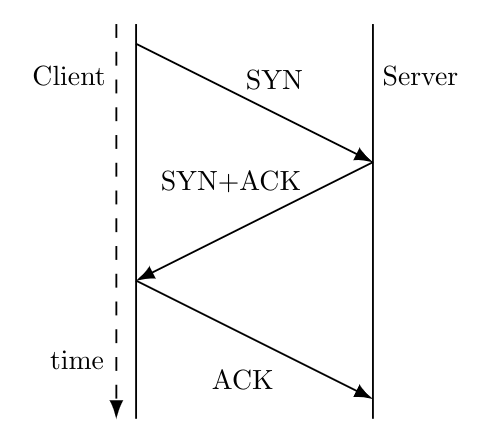The three way handshake for $\text{TCP}$ connection establishment is shown below.

Which of the following statements are TRUE?
$S1:$ Loss of $\text{SYN} + \text{ACK}$ from the server will not establish a connection
$S2:$ Loss of $\text{ACK}$ from the client cannot establish the connection
$S3:$ The server moves $\text{LISTEN} \to \text{SYN_RCVD} \to \text{SYN_SENT} \to \text{ESTABLISHED}$ in the state machine on no packet loss
$S4:$ The server moves $\text{LISTEN} \to \text{SYN_RCVD} \to \text{ESTABLISHED}$ in the state machine on no packet loss
- $S2$ and $S3$ only
- $S1$ and $S4$ only
- $S1$ and $S3$ only
- $S2$ and $S4$ only